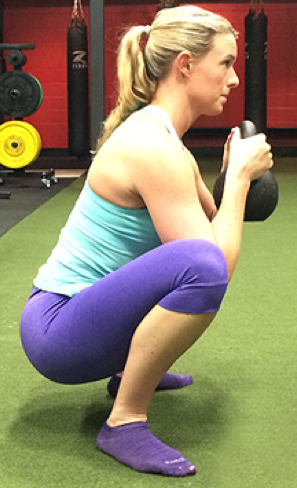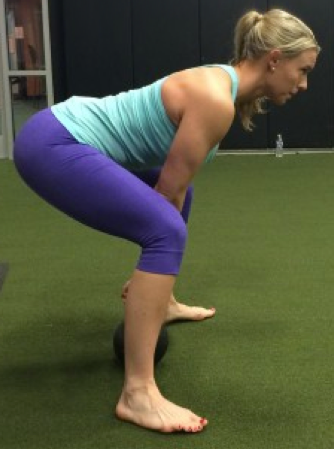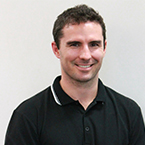At Central Performance our goal is to provide our clients with the education and skills to become self-managing, and not require long term treatment from us. A major part of allowing our clients to become self-managing is helping them to find a form of exercise that they enjoy and will be able to participate in long term. For a lot of our clients part of this long term exercise will be some form of resistance training, whether that be with our strength and conditioning coaches, at their local gym or outdoors. A well balance resistance training program is an integral part of long-term health maintenance and injury prevention.
In order to provide our clients with a balanced resistance training program our preference is to train movements rather than muscles. Our human brain categorises all movement in general movement patterns rather than specific muscles. To help us design well-balanced resistance training programs for our clients we try to generalise these movements into 6 categories. At Central Performance the 6 movement categories we use are:
1. Push
2. Pull
3. Hinge
4. Squat
5. Gait
6. Rotation
These movement categories cover almost every exercise you can think of. Some examples include:
- Push = push-up, bench press, dip and shoulder press
- Pull = chin-up, pulldown, row and shrug
- Hinge= deadlift and kettlebell swing
- Squat= squat and lunge
- Gait= walking, running and loaded carries
- Rotation= throwing, swinging, striking, reaching, and cutting/changing direction in sport
By using these classifications we can then break movement down into particular technique points that help improve efficiency and reduce injury risk. In our categories of movements pushing and pulling exercises are the categories for upper body movements. They can be further broken down as such:
- Horizontal push/pull= push up and bench press/dumbbell row and TRX Row
- Vertical push/pull= shoulder press/chin-up and pulldown
For most of our clients who sit at a desk all day, balancing pushing and pulling exercises doesn’t mean a 1:1 ratio. More often than not we will see clients whose ‘pushing’ muscles are tighter and stronger than their ‘pulling’ muscles due to the postures they are habitually in. This muscle imbalance can lead to a variety of niggles and injuries including shoulder and neck problems. In order to restore balance between the pushing and pulling exercises we may give our clients programs with 1:1.5 or 1:2 ratio of pushing to pulling exercises. We are generally not trying to address specific muscles but all the muscle groups that contribute to those movements.
For the lower body, movements can be broken down into a hip hinge and squat. Hip hinge movements utilise of the back of the body, or posterior chain, such as the hamstrings and glutes more than the squat. Conversely the squat uses the muscles of the anterior chain such as the quads more than the hip hinge does. An easy way to differentiate between the two is the hip hinge requires maximal hip flexion with minimal knee flexion, while the squat requires maximal flexion of both the knees and hips.
Please note: A neutral spine position is recommended throughout the execution of both movements.

Squat: Lots of hip and knee movement.
Similar to the push and pull movements for the upper body, a clients program will often require a balance of hip hinge and squat movements that are not in a 1:1 ratio. Again, due to prolonged periods of sitting many of our clients are required to do for work, we will see a weakness or loss of the hip hinge movement pattern and strength in the posture chain. A weakness in the hip hinge and posterior chain can be a contributing factor in back pain as the back is forced to move more and produce more force than ideally it should have to. Therefore, retraining the hip hinge movement pattern will often be the first step in our exercise programs.
Gait may seem like the most natural thing in the world as almost everyone can walk and run to some extent. However, again due to habitual sitting postures and we see big deviations in gait. We will also often see significant changes in gait as a result of injury or pain. Guarding postures and movements that were adopted at the onset of pain often persist long after the pain has resolved and may end up contributing to pain becoming persistent. We have a variety of ways of assessing gait including Gait Scan and our RunRight Program. If running is a form of exercise you enjoy or would like to start but are battling persistent, niggling injuries or are scared to start then I would highly recommend participating in our RunRight program, headed up by our physio Ben who himself is a former national level 800m and 1500m runner and now a high level running coach.
Rotation is the final movement pattern we look at. Almost every field or court based sport requires some form of rotation. Whether it is change of direction in soccer, rugby union/league or basketball, throwing in cricket or baseball, the serve in volleyball, or every shot in both tennis and golf, efficient and effective rotation is vital to sports performance. With rotation we want to see the movement and power generated at the hips and/or shoulders and efficient transfer of energy through a stiff core.
Unfortunately, for a lot of our clients we see stiff, immobile hips which results in them relying on their spine and core muscles to generate the rotational force. This is both an inefficient way to produce rotational power but it is also a possible injury mechanism. The world’s foremost spine biomechanist Stuart McGill says the spine can tolerate high load with low speed or high speed with low load but a combination of high load and high speed is a potent mechanism for injury.
At Central Performance both our Head of Strength and Conditioning Danny and Physiotherapist Helen have completed the Titleist Performance Institute (TPI) Level 1 certification. While the TPI course is a golf-specific course it has practical applicability to all rotational sports.
Through our use of the Selective Functional Movement Assessment (SFMA), Functional Movement Screen (FMS), Y-Balance test, RunRight and TPI movement screens, we are able to identify which movement patterns our clients are strong in, and those in which they are weakest in. From this thorough assessment process we are then able to design training programs that will both help address these relative weaknesses in the short-term as well as prevent recurrences in the long-term.
Our aim is to provide the right plan and guidance to help our clients become not only fitter, stronger, faster, and healthier than ever before, but to also become self managing with the tools to look after themselves for a long time after they’ve been with us.
Hugh Campbell is an Accredited Exercise Physiologist, currently undertaking a Masters of Exercise Science (Strength & Conditioning) from Edith Cowan University. Hugh is responsible for bridging our patients from pain to performance training at Central Performance. Contact Hugh at Hugh@centralperformance.com.au




